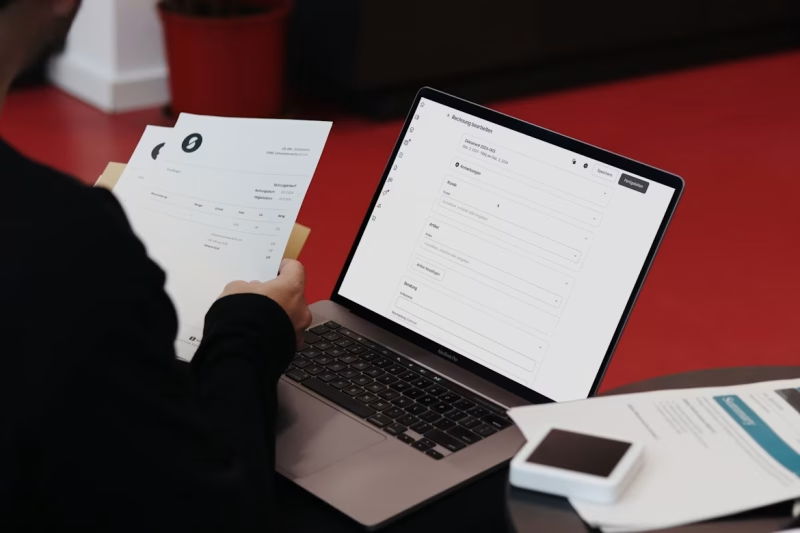Manual vs. Automated Billing: Cost, Time, and Efficiency Tradeoffs

Billing should not feel like a second constant job. But for many small businesses, it does. From missed follow-ups to version control issues, manual invoicing can quietly drain time and energy that should go toward growth. What starts as “just sending invoices” can quickly snowball into hours of unbilled admin work every week.
For companies scaling fast or managing recurring clients, the hidden costs of manual billing pile up. That’s where smart automation can change the game. Platforms like qorp.io offer a way to simplify, streamline, and reclaim hours without losing control or flexibility.
What Manual Billing Involves
On the surface, manual billing seems easy. You create an invoice, send it, wait for payment, done. But in practice, it’s rarely that clean. Someone has to generate the invoice, confirm the amount, double-check the client’s details, attach terms, and make sure it lands in the right inbox.
Then there’s follow-up. Did they open the invoice? Should a reminder go out? Who sent the last one? Did the client ask a question? Manual billing turns into a web of tasks and the moment things get busy, late payments start creeping in.
What Automated Billing Brings to the Table
Automated billing shifts that entire process onto rails. Instead of crafting each invoice from scratch and tracking it in spreadsheets or inboxes, the system handles it all: it generates invoices, sends them on schedule, and nudges the client if payment doesn’t come through.
Better yet, automation creates a consistent experience for your clients. The look, feel, and tone of every invoice is polished and predictable. Plus, payment options, reminder timing, and trust cues can adjust automatically based on the client’s behavior or history.
Manual vs. Automated: The Key Tradeoffs
Time Investment
Manual billing is time-hungry. Each invoice takes minutes, and that time adds up fast when your client list grows. Even just five minutes per invoice can mean hours every month spent on admin.
Automated billing, in contrast, is mostly a one-time setup. You define invoice rules, set your frequency, and let the system do the rest. Instead of working inside the process, you’re reviewing it.
Hidden and Ongoing Costs
Manual invoicing might seem “free,” but the labor cost is very real. Every reminder email, correction, or delayed payment takes someone’s time. Errors can lead to disputes, slow cash flow, and missed revenue opportunities.
Automation introduces a software fee, but it offsets that with predictability and scale. You pay for a system, not hours lost to repetition, follow-ups, and human oversight.
Accuracy and Reliability
Even careful teams make mistakes, typos, missed due dates, and wrong amounts can damage credibility. Clients lose trust when they get confusing invoices or inconsistent communication.
Automated systems deliver consistent, high-quality output. They never miss deadlines and log every action. They provide a clear, auditable trail for both you and your clients, which reduces disputes.
Scaling a Business? The Billing Approach Matters
Manual billing may work with a small client base, but as your business grows, it becomes a bottleneck. A single staff member can only do so much before invoicing lags behind service delivery.
With automated billing, scaling becomes effortless. Whether onboarding new clients or launching a new pricing tier, the system adapts instantly without adding extra admin hours. It’s the leverage needed to maintain momentum.
How Platforms Like Qorp Help You Move to Automation Smoothly
Qorp streamlines your transition to automated billing with simple setup and powerful features:
- Fast onboarding with no need for custom development
- Recurring invoicing that scales with your model
- Smart trust scoring to tailor reminders and reduce delays
- Invoice customization that fits your brand and tone
- Built-in logic to reduce errors and ensure consistency.
With platforms like Qorp handling the technical heavy lifting, you can run professional billing without becoming a fintech expert. Automation seamlessly integrates into your workflow.
Billing Isn’t Just Back Office, It’s Client Experience
How you bill says a lot about how you operate. Late, inconsistent invoices suggest disorganization. Fast, frictionless ones build confidence. And when it’s streamlined, you’re free to focus on service, strategy, and scale.
Switching from manual to automated invoicing isn’t just about saving time. It’s about turning a routine task into a competitive edge. Let automation do the heavy lifting, and start treating billing like the growth tool it really is.




